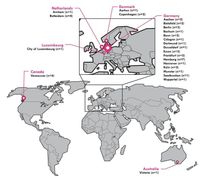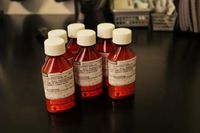Supervised consumption services (SCS) are places where people can use drugs in a safe setting under staff guidance. Worldwide, there are 130 SCS and more are planned or in development.
The majority of SCS only allow injection drug use. These SCS improve the health of people who inject drugs. They help reduce overdose risk and public drug use, and increase access to health and social services. Unfortunately, they leave out other groups of people who use drugs.
Many people use drugs through routes other than injection. For example, many take drugs orally, by snorting (intranasal), or by smoking (inhalation). These routes of consumption can also carry health risks such as overdose, HIV and HCV transmission, and vulnerability to physical violence. SCS that allow other routes of consumption (beyond injection) can help reduce many of these risks.
SCS in Europe have accommodated smoking/inhalation and other non-injection forms of consumption for over 30 years. Lately, Canada has also started to open SCS for oral, intranasal, and inhaled drug use. Yet, most SCS research is focused on injection drug use. As a result, we have very little information on SCS allowing other routes of consumption.
We wanted to know what was known about SCS permitting oral, intranasal, and inhaled drug consumption. What do they look like? How do they operate? What kinds of people use them? As part of a bigger project, we gathered peer-reviewed and non-academic reports that mentioned SCS that accommodate drug consumption other than injection. We summarized information on layouts, hours of operation, rules, eligibility, and people who use these SCS.
“We wanted to know what was known about SCS permitting oral, intranasal, and inhaled drug consumption. What do they look like? How do they operate? What kinds of people use them?”
We identified 48 SCS that allow drug consumption through oral, intranasal, or inhalation. Most were located in Germany.

We found that SCS allowing oral, intranasal, and inhaled drug use were similar to SCS supervising only injection. Most were legal and part of existing health and social services. Common services available at these sites included harm reduction supplies and safer drug use education. The people who used SCS allowing other routes of consumption were typically men over the age of 30. Most were also experiencing homelessness or unstable housing, similar to people who use SCS for injection.
A minimum age was often required to enter these SCS and most excluded pregnant women or people who had children with them. Some people might believe this will improve safety or avoid drug use in youth or pregnant women. Unfortunately, excluding women and youth may actually create more harm. Women who use drugs are more likely to experience violence than men and youth have risky patterns of drug use compared to adults. For these reasons, both women and youth who use drugs are at risk for infectious diseases. Ensuring women and youth have access to SCS can give them much needed support. Some of the SCS we found did target women and youth. We hope that future SCS focus on these vulnerable groups of people who use drugs to meet their health and social wellbeing needs.
We found some differences between SCS allowing oral, intranasal, and inhaled drug consumption compared to SCS for injection only. SCS allowing inhalation had rooms with ventilation or outdoor areas to deal with resulting smoke. The SCS we identified also had shorter time limits for inhalation compared to injection. This may be because preparing drugs for inhalation is usually quicker than for injection.
“Some of the SCS we found did target women and youth. We hope that future SCS focus on these vulnerable groups of people who use drugs to meet their health and social wellbeing needs.”
Our project is a first step in improving our understanding of SCS that allow drug use beyond injection. However, we still have an incomplete list. Not all SCS publish information on their services and many of the documents we found were unclear. For example, many articles discussed SCS characteristics in general and did not specify which characteristics (e.g., layout, route of consumption) applied to each SCS. When the same SCS was discussed in multiple articles, the information was often conflicting. This limits our understanding of the different ways these SCS operate.
As more SCS look to support people who use drugs through other routes of consumption, we hope to see additional research on these services. Clear knowledge can better support their development. Ultimately, we believe these SCS can help meet the unique needs of people who use drugs by oral, intranasal, and inhaled routes of consumption.






